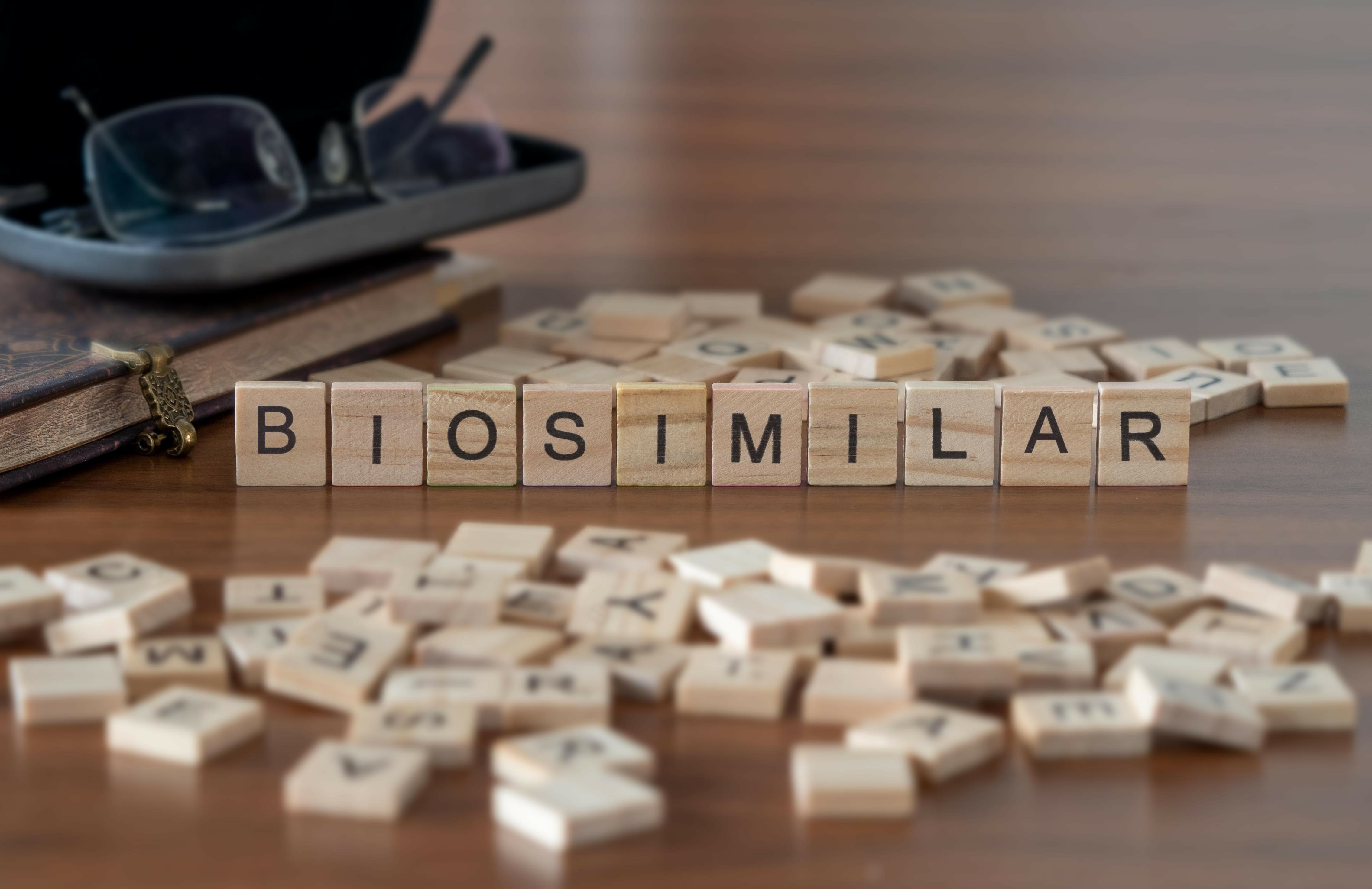- Bone Health
- Immunology
- Hematology
- Respiratory
- Dermatology
- Diabetes
- Gastroenterology
- Neurology
- Oncology
- Ophthalmology
- Rare Disease
- Rheumatology
The Promise of Biosimilars Is Within Reach for Health Systems
A collaborative exercise with 16 health care organizations nets millions in savings.
This article was originally published in Pharmacy Times®. This version has been lightly edited.
With 104 biosimilar products under review in the FDA biosimilar development program, the aggregate savings for health care organizations as a result of their implementation and use is expected to exceed $100 billion over the next 5 years.1,2 However, full optimization of biosimilars adoption, despite their promise to compete in price with their biologic originator reference drug, has been slow because of barriers that exist at every step in the conversion process.
Image credit: lexiconimages - stock.adobe.com

Since first coming to the US market in 2015, 40 biosimilars have received FDA approval, and 27 of them are commercially available. Although patient and prescriber acceptance has improved, formalizing the process remains a challenge for many organizations.
In spring 2022, I was part of a team that hosted 20 health care organizations in a performance improvement collaborative focused on the optimization of biosimilar medications. Of these 20 organizations, 16 completed the exercise and submitted their results.
During the 6-month exercise period, each organization was given the opportunity to choose which biologic(s) to focus on—with the caveat that they had to actively engage in initiatives for those selected biologic(s). The results were exciting: Most exercise participants saved an average of nearly $3 million per hospital.
So how did they do it? The group set up a framework designed around 5 domains: education, policies, implementation, finance, and optimization. We used these domains to establish the educational content and build the pre- and postcollaborative assessments, asking each participant to complete both.
Determining a Framework to Identify Areas of Focus
At the beginning of the collaborative, we determined 28 leading practices among our participants for our baseline assessment. From there, we identified the primary focus of the collaborative’s education and discussion. The results showed the following:
- An organization’s biosimilars education plan should include resources and a process for the prior authorization team that provides ongoing flow of information regarding changes in preferred products and additions to the medication formulary.
- Order sets or treatment pathways should be built into the electronic health record to optimize biosimilar use.
- A standard process must exist for converting patients to an approved biosimilar.
A process should be in place to routinely review and evaluate current market share of originator and biosimilar(s) products.
Framework Yields Results
After implementing these steps, we compared baseline and remeasured data for the 16 participants 6 months later. The collaborative group realized a 24.7% reduction in reference product spend and an overall (reference + biosimilar) reduction in spend of 12.5%; this reduction accounted for $40,399,590 in savings. Fourteen of the 16 organizations reported data that showed improvement in drug spend with an average reduction of $2,932,739 per improving organization.
How Organizations Can Optimize Biosimilar Use
Health care organizations can achieve pharmaceutical cost savings with the use of biosimilars while simultaneously achieving the same quality outcomes. To do this, organizations should develop a standard education memorandum and template to disperse among key stakeholders. The plan should include resources and processes for patients, providers, nursing staff, pharmacy staff, and the prior authorization team, providing an ongoing flow of information regarding changes in preferred products and additions to the medication formulary.
Policies should be put into place to standardize and facilitate the approval, implementation, and optimization of biosimilar medications. The standardized formulary review process should be used across the health system and include an assessment of indication, clinical data, insurance coverage, and operational impact. Organizations should also look to design these policies and procedures with an eye for optimization:
- Select preferred products through the standard formulary review process.
- Declare all biosimilars therapeutically equivalent, utilizing the formulary process.
- Develop standardized workflows to facilitate ordering/prescribing and converting to preferred product(s).
- Optimize the electronic health record ordering pathways to facilitate uptake and reduce provider burden.
Organizations should also complete a comprehensive financial review during each new product review as part of the ongoing biosimilar optimization program. The initial and ongoing review process should evaluate cost, access, payer mix, payer coverage, reimbursement, and operational impact across the health system. An ongoing evaluation process following the initial implementation will help optimize biosimilar utilization. The process should include an evaluation of current market share of originator and biosimilar(s) products as well as policies and workflow to monitor and address noncompliance with approved formulary and substitution policies. Importantly, organizations should develop a communication plan to consistently inform stakeholders of cost savings, payer landscape changes, and patient outcomes to ensure continued engagement. This helps secure buy-in and support from key stakeholders.
With over 100 biosimilars poised to enter the market, the promise of lowered costs for providers and patients is a potent one, but it will be up to health care professionals to ensure this promise is not broken.
References
- FDA-TRACK: Center for Drug Evaluation & Research - pre-approval safety review - biosimilars dashboard. FDA. Updated June 1, 2023. Accessed Aug 10, 2023. https://www.fda.gov/about-fda/fda-track-agency-wideprogram-performance/fda-track-center-drug-evaluation-research-pre-approvalsafety-review-biosimilars-dashboard
- The IQVIA Institute. Biosimilars in the United States 2020-2024: competition, savings and sustainability. IQVIA. September 29, 2020. Accessed May 23, 2023. https://www.iqvia.com/insights/the-iqvia-institute/reports/biosimilars-in-the-united-states-2020-2024
About the Author
Jim Lichauer, PharmD, BCPS, FASHP, is the performance improvement program senior director at Vizient.
Newsletter
Where clinical, regulatory, and economic perspectives converge—sign up for Center for Biosimilars® emails to get expert insights on emerging treatment paradigms, biosimilar policy, and real-world outcomes that shape patient care.
